Food Dive
By Thai Phi Le
June 10, 2019
Link to story
Food waste is worth $46.7 billion and is expected to grow 5% during the next decade, providing companies with a lucrative way to make money and cater to consumers who value sustainability.
For centuries, dairy farmers from Wisconsin to California have referred to those squeaky chunks of cheese as curds, but in today’s buzzword world, that whey byproduct is upcycled food.
“We’ve been upcycling before upcycling was cool, before upcycling was a thing,” Justin Shimek, CEO of Mattson, a food and beverage consulting firm, said last week during a panel at the annual Institute of Food Technologists conference in New Orleans.
But upcycled food is a thing, and a big one at that. According to a study by Future Marketing Insights, the food waste business is worth $46.7 billion in 2019 and expected to grow 5% during the next decade.
There are more companies, large and small, trying to get a piece of the billion-dollar market. These businesses are using food waste byproducts in everything from food and beverages to supplements, biofuel and pet food. At IFT, several startups proudly highlighted their upcycled ingredients, from Planetarians’ protein flour made from defatted sunflower seeds (what’s leftover after oil is extracted) to Renmatix’s functional fiber created from maple waste.
While it’s not surprising to see entrepreneurs venture into the space, Shimek said it’s also becoming an attractive market for more established companies.
Tyson Foods, for example, created protein crisps ¡Yappah! from leftover chicken trim, vegetable puree and pulp from juicing and donated spent grain from Molson Coors. Spent grains are a popular ingredient, with beer rival AB InBev backing beverage startup Canvas to develop fiber-rich drinks using the byproduct and ReGrained producing granola bars.
These innovations are strategic. Upcycled ingredients are in demand. In a 2019 food waste and upcycling survey of more than 500 consumers from 25 to 73 years of age, Mattson found that 74% saw food waste as an extremely big issue, while 26% said it was somewhat of an issue — meaning everyone believes at some level there is a problem that needs a solution.
And they’re putting their money where their mouth is. In the same study, 39% of consumers currently aim to buy food and beverages using upcycled ingredients. That number rises when looking to the future, with 57% planning to buy more next year.
“There’s a wind at your back and an opportunity,” said Shimek.
A call to action for large and small companies alike
How to seize the opportunity, however, looks different for a large CPG company versus a startup, and not simply because of resources and financial power.
“Most of the companies are upcycling because they have a problem [with food waste]. We are upcycling because we have the solution,” said Danilo Cantero, a vice president of research and development at Renmatix whose technology turns raw plants into sustainable products.
The problem weighs heavily in the U.S. with 133 billion pounds of food thrown out annually, according to the U.S. Department of Agriculture. While individuals bear the brunt of the blame, the Mattson study showed consumer sentiment looked harshly on the role of bigger businesses. Of those surveyed, 42% considered restaurants the biggest culprits of food loss, followed by grocery stores at 16% and food manufacturers at 14%.
In addition to the continued erosion of the public’s trust, the financial costs are high. Nonprofit ReFED reported U.S. manufacturers lose $2 billion a year because of the issue, while costing consumer-facing businesses $57 billion.
These losses, coupled with greater public demand for more sustainable goods, has propelled food and beverage creations like ¡Yappah!, Toast Ale brewed with surplus fresh bread and Forager Project chips made with leftover juice pulp exist. It’s also moved food waste to the forefront as consumers and businesses alike try to alleviate the problem.
One of the largest calls to action comes from the U.S. Environmental Protection Agency with its Food Recovery Challenge. The program asks businesses to pledge to reduce food waste by 50% by 2030. There are more than 1,100 participants, including big names such as Campbell Soup, Nestlé, PepsiCo, Kellogg, Kroger, Ahold Delhaize and Yum Brands.
Upcycling startups, on the other hand, aren’t looking to reduce their own waste, but to optimize what is already out there.
“When you upcycle what’s already grown, you don’t have to grow more crops. You don’t need to acquire more land, consume more water,” Aleh Manchuliantsau, founder and CEO of Planetarians, said during another IFT panel.
Entrepreneurs on the IFT expo floor were eager to talk about the complex work their food scientists have conducted to get their products ready for public consumption.
Comet Bio, for instance, uses farm leftovers to make dextrose by separating cellulose and going through enzymatic treatment, CEO Rich Troyer told Food Dive. The end product can be used in baked goods and beverages. Renmatix dissolves maple fiber using water to make a plant-based egg replacement.
These companies have spent years trying to hone and patent their work — and they’re passionate, to say the least. So how can startups scale up their solutions?
“These behemoths, they [in] one year, two years, three years … develop a new product. How can we make it faster?” Manchuliantsau said in an interview with Food Dive on the sidelines of the IFT conference.
The answer — and hope — for many is to partner with one of these “behemoths” looking to innovate around the food waste problem.
Scaling up to make tectonic changes
Planetarians, a CPG company turned ingredients maker, may be one of the closest to reach a national audience. In March, the company closed a $750,000 seed round with investors including Barilla Group, the pasta maker’s venture capital arm. Manchuliantsau told Food Dive the protein flour maker has been working with the company since last year’s IFT conference on full-scale R&D trials.
“They specifically told us that if you play with small or medium-sized machines, you still have the questions of scalability,” he said. “They decided to build the pilot plan as a full-scale plan.” During testing, Barilla has made black pasta, bread, crackers, tortillas and biscuits.
Planetarians also has started similar trials with Mondelez and General Mills, Manchuliantsau said. For Mondelez, Planetarians developed a tan version of its flour to make products with a more natural appearance versus its original black version. Its momentum continued with companies including Kraft Heinz, Kind, PepsiCo, Tyson, Kellogg and Unilever requesting samples.
“We focus on the bigger companies because those big companies they can help make tectonic changes in the food industry,” Manchuliantsau said. “We are still very tiny against ADM, Cargill and big ingredients manufacturers. Our advantage is that we upcycle what is already grown. We play in a different league. … We’re better united around each other to expand the system of upcycled ingredients.”
Contending with opposing consumer sentiments
Even if the ingredients hit the national market, will consumers shift to products they don’t recognize and are uncertain of how to use versus their trusty all-purpose counterparts like flour and sugar?
“The way the material works and how it’s made is different to what is already on the market,” Cantero said. “It’s one of the main challenges, showing the user that it’s an ingredient that can act in different areas. You have to be open … It’s not a one-for-one trade. You have ingredient A, but maybe you can also replace a fraction of B and C.”
That functionality is common among upcycled products. For example, in the majority of cases, Comet Bio’s dextrose and fiber products are virtually indistinguishable from its counterparts, except in some baked products, Troyer told Food Dive.
“It spreads less in cookies than it would if you used existing products, which can be easily adjusted for,” he said.
Caroline Cotto, COO of Renewal Mill, told Food Dive the company’s okara flour, made from a byproduct of soymilk, requires a different percentage of flour in baking as well.
“Everyone thinks the idea [of upcycling] is really cool, but how do you move people to … actually (use) it when it’s an unknown ingredient that they haven’t heard of it? They may not be familiar with it on the label,” she said.
And labeling adds an entirely different wrinkle to the issue. Despite the increasing demand for upcycled products, companies must also contend with consumer desire for at least a simple, if not clean, label. Manufacturers often need to take raw materials and process it more to make the upcycled ingredient useable and safe for eating.
Shimek of Mattson acknowledged during a panel that the firm doesn’t have data on how consumers reconcile the idea behind upcycled sustainability and processing. Some sources of waste streams, such as pulp from juice processing, will be easier to accept “versus something that is more of a complex isolate or has a more complicated name,” he said.
Complicated terms — polarity, biomass, pressurized fluid systems, residue and byproduct — can turn off a consumer.
“Clean label doesn’t mean healthy,” Cotto argued. While the technology to develop upcycled ingredients may sound overly processed, the products themselves typically are not.
Renewal Mill’s flour, for example, is from whole soy with minimal processing. At Renmatix, it’s heat and water used to create its fiber. In fact, the company received the U.S. Presidential Green Chemistry Award in 2015 for its clean technology.
“This is going to come down to creative and effective storytelling. It’s cliché, but it’s as true as ever,” Rachel Cheatham, CEO and founder of nutrition strategy consultancy Foodscape Group, told Food Dive.
The consumer acceptance hurdle can be a tough one. While the Mattson study showed a majority of shoppers wanted to buy more sustainable products, 33% didn’t plan to increase their spending. Looks still matter, and according to a recent Harris Poll, 81% said appearance played a somewhat significant role in their purchasing decisions.
“Yes, they want it when you survey them, but when it comes to actual purchase behavior, will they buy it? Even if they bought it, did they eat it?” Cheatham said. “Will the consumer reconcile this desire for better resource use, more sustainable food production, less food waste — whatever language we want to use around that — will they reconcile that up against how they purchase and make decisions on what products appeal to them and why?”
She said it’s incumbent upon individual brands to tailor their messaging to help their target consumer understand the offering.
Cotto agreed. “It requires a lot of consumer education,” she said.
This is why Renewal Mill created a cookie for purchase at convenience stores and other food retailers to show people that even with upcycled okara flour, it still tastes like other chocolate chip cookies. It also helps the company gather data to show bigger CPG companies that consumer demand is there if its sales are growing.
Education, however, isn’t just about the product but also about the cost because many shoppers think it should be cheaper — the products, in their minds, are leftovers and waste. But in reality, going green is expensive. Demand is growing, but not at a fast enough pace to bring down the prices of eco-friendly items. In fact, the average American can’t afford the price of being sustainable, according to Bloomberg’s interview with venture capitalist Christine Lu.
“[Consumers] think it should be all but free,” Cheatham said. “Of course, that’s not the case at all when you’re talking about a food-grade ready ingredient and developing a supply chain that does not exist at all right now. It’s actually quite expensive. Trying to figure on a consumer level, not just the authentic story, but is the value there? How much will someone pay for a product that took the product team effort to source the ingredient because of the upcycled nature of it?”
But for many in the upcycled space — entrepreneurs and manufacturers alike — it’s about more than money. “Beyond just profit, there’s a bigger bottom line. How can we help the planet, help the people,” Shimek said.






